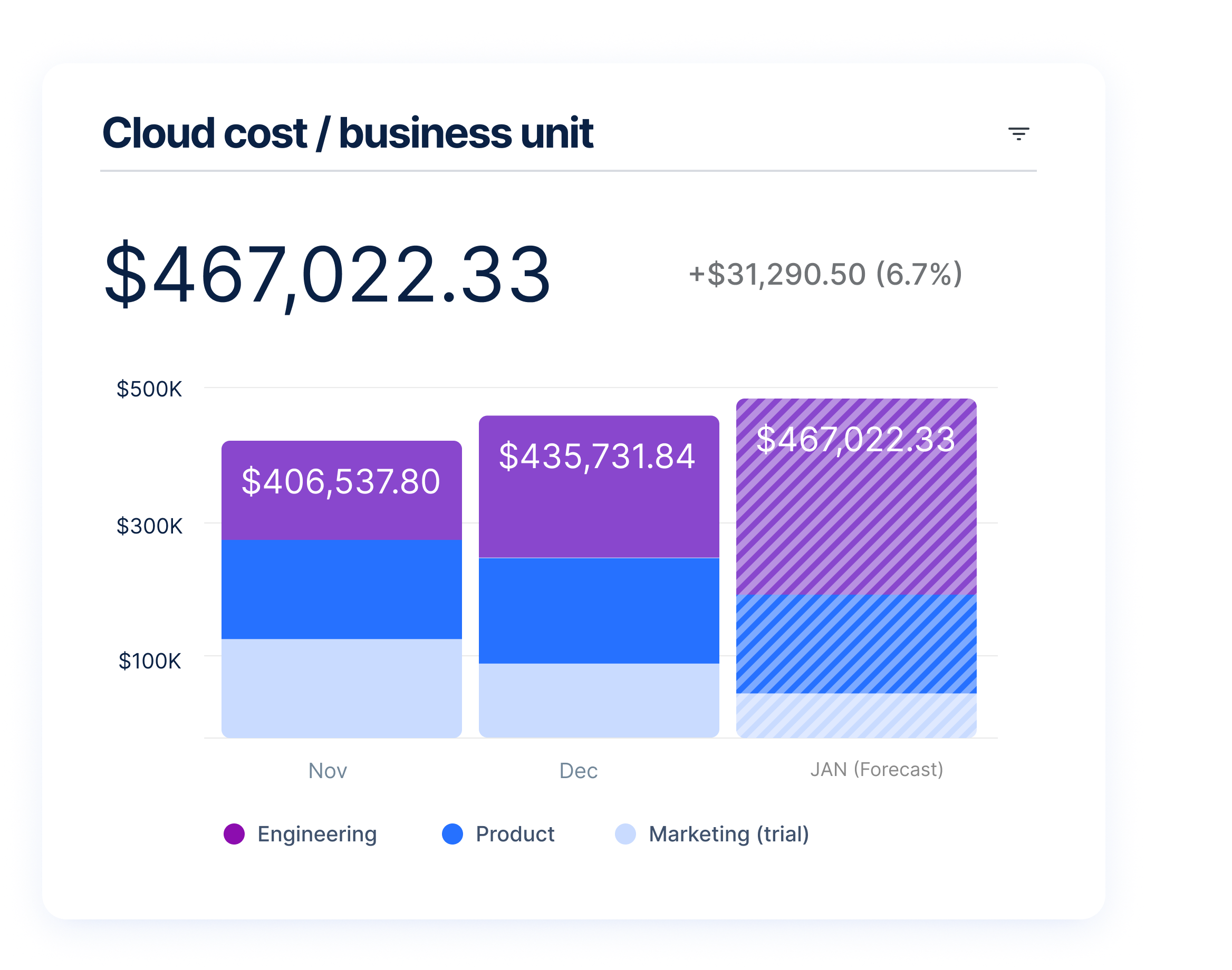The cloud’s elasticity—the ability to scale resources up and down in response to changes in demand—as well as variable cost structures offer significant advantages, enabling enterprises to move from rigid capex models to elastic opex models where they pay for what they provision, with engineers in control and focused on innovation, becoming true business accelerators.
But this benefit is also the cloud’s Achilles heel, because when engineers focus on speed and innovation, cloud bills soar, becoming one of the most expensive cost centers for modern enterprises. This creates financial and operational challenges that require the creation of systems to measure the variable costs and usage metrics associated with dynamic infrastructure changes.
In this blog post (the first of a three-part series on cloud unit economics) we’ll introduce the concept of cloud unit economics as a system to objectively measure dynamic cost and usage metrics, and continuously maximize cloud value to deliver more outcomes per each dollar spent.
Understanding cloud economics and embracing this FinOps capability is essential for cloud practitioners aiming to balance cost optimization and value delivery. By monitoring key unit economics metrics and implementing unit-metric-driven cost optimization strategies, businesses can unlock the full potential of cloud services while maintaining financial efficiency.
(Some of the information in this blog series has been adapted from the Unit Economics Working Group by FinOps Foundation under the Attribution 4.0 International (CC BY 4.0) license.)
What is cloud unit economics?
Cloud unit economics and the measurement of unit costs is an important part of FinOps that enables enterprises to make informed decisions about their cloud investments. It’s the specific application of unit economics—direct revenues/costs measured on a per-unit basis—to cloud financial operations, which directly supports every FinOps principle and depends on key interactions across all other FinOps domains.
It allows you to:
- Communicate the cost and value of everything your organization does in the cloud
- Benchmark how well you’re performing versus your FinOps goals and peers
- Continuously optimize to deliver more value
Unit economics metrics provide an objective measure of cloud-based SaaS development (e.g., cost to produce) and delivery costs (e.g., cost to serve).
By understanding the economic principles underpinning cloud services, organizations can create cost-effective strategies that optimize their bottom line while at the same time leveraging cloud-based technologies to improve efficiencies and increase value for customers. If you’re a MSP seeking to get your customers more value with FinOps, get more insights by watching our webinar.
Cloud unit economics are crucial to FinOps success
By using CUE metrics, multiple stakeholders can engage in meaningful discussions about cloud investments, quantify the impact of cloud spend on business performance, and make better product and pricing decisions.
Cloud unit economics move conversations from absolute spend to business value achieved per unit of cloud spend, enabling inter-departmental collaboration essential to FinOps success.
Cloud economics is a powerful tool that can be used to maximize the value of cloud computing and optimize an organization’s use of the cloud. By measuring unit costs, organizations can maximize profitability and value delivery while remaining within their budget constraints.
Here’s why you should start measuring unit costs as early as possible:
- With the cloud, you’re buying time, not things. It is therefore crucial that you consider how to maximize your cloud technology investments by making data-informed decisions.
- The cloud relies on a variable cost, elastic opex model where enterprises pay for what they provision—with engineers in control, not procurement.
- To maximize your cloud investment, you must understand the TCO of the cloud (beyond compute, storage, and db) including shared costs and secondary services.
- Cloud pricing models have a dramatic impact on cloud unit economics. RI/SP and other commitment-based discounts can completely alter your cloud economics.
- Forecasting and budget management require a thorough understanding of cloud unit economics, not only for expected costs, but also for supporting future demand.
- It’s better to make strategic decisions and optimize costs based on unit costs rather than total costs.
- Building FinOps culture and communicating cloud costs and value with engineers is best accomplished with unit metrics.
It’s important to note that data analysis and cost allocation are fundamental FinOps capabilities for effective unit cost measurement. You must establish granular cost/usage visibility and allocation before you can start measuring unit costs.

Cloud unit economics unlocks the value of cloud computing
Cloud economics is a powerful concept in FinOps that can help organizations unlock the full business potential of cloud computing.
By leveraging cloud unit economics metrics, businesses can realize:
- Lower cloud costs
- Motivate cloud stakeholders
- Quantify engineering contribution to gross margins
- Improve profitability analysis and forecasting
- Build better cost optimization plans
- Increase profit margins
Moreover, having a common language between stakeholders helps ensure decisions are made quickly based on data-driven insights rather than guesswork or intuition. This is especially beneficial when trying to manage costs while still maximizing profits from new sources of revenue within budget constraints.
Cloud unit economics metrics can help you focus on efficiency and value, enabling you to establish efficiency targets and identify areas for improvement.
Despite its benefits, CUE is elusive for many FinOps teams. According to our market research, 70% of companies want to measure unit economics metrics but are not there yet. Where does your organization stand?
In our next blog post in the series, we will take a deep dive into why cloud unit economics matters, its benefits, and how to get started, as well as FinOps Foundation maturity models.
Improve your cloud unit economics with Anodot
Certified FinOps platforms, like Anodot, can help you establish and mature key FinOps capabilities faster.
Anodot is the only FinOps platform purpose-built to measure and drive success in cloud financial management, giving organizations complete visibility into KPIs and baselines, advanced reporting capabilities, and savings recommendations to help control cloud waste and improve cloud unit economics.
Anodot helps FinOps teams quantify the cloud’s role in financial performance, forecast profitability, and optimize their unit costs to maximize their profits.
Learn more or contact us to start a conversation.
Start optimizing your cloud costs today!
Connect with one of our cloud cost management specialists to learn how Anodot can help your organization control costs, optimize resources and reduce cloud waste.





